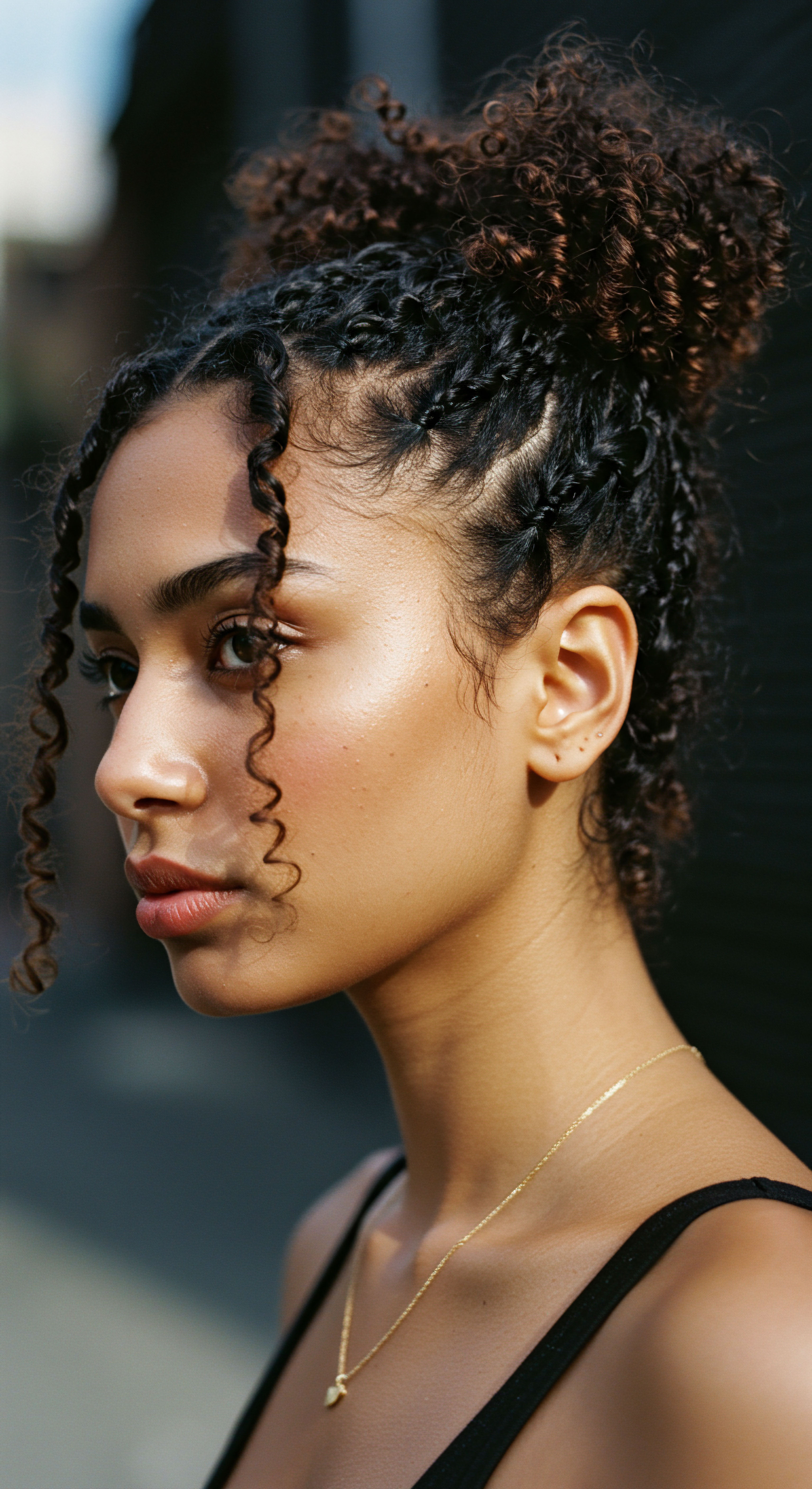
Roots
Our strands hold stories, not just of daily adventures and chosen styles, but of ancient lineages, the very composition of our being, and the silent forces that shape their journey. For those with textured hair, this narrative is particularly rich, yet often accompanied by quiet observations of vulnerability. We may notice a subtle shift in the morning, a whisper of dryness, or a delicate strand left behind on a pillow. This experience, seemingly small, hints at a deeper interaction occurring while we rest.
It beckons us to look closer, to truly perceive the foundational architecture of textured hair and how the unseen friction of sleep might alter its inherent resilience. To truly understand this nocturnal challenge, we must first appreciate the remarkable design of each individual fiber, from its very core to its outermost protective layers.
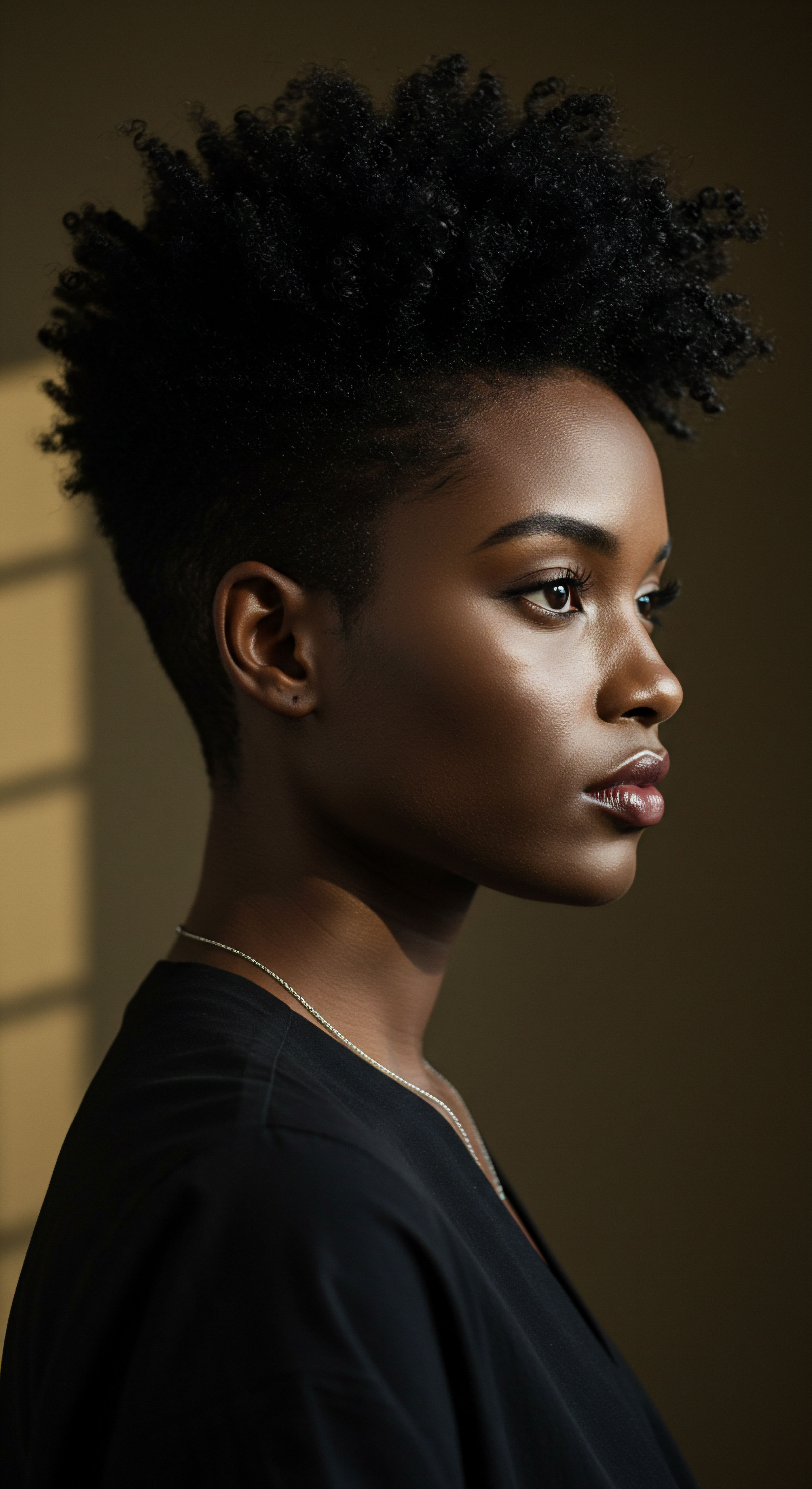
Hair’s Grand Design
At its fundamental level, each hair strand is a marvel of biological engineering. It rises from the scalp, a living extension with a complex structure designed for both strength and flexibility. The outermost shield, the Cuticle, comprises overlapping, scale-like cells, much like shingles on a roof. These scales lie flat in healthy hair, reflecting light and providing a smooth surface that reduces friction.
Beneath this protective layer lies the Cortex, the heart of the hair fiber, composed of keratin proteins bundled together, giving hair its strength, elasticity, and color. A central channel, the Medulla, may or may not be present, varying by hair type and individual.
For textured hair, this universal blueprint takes on distinct characteristics. The elliptical or flat shape of the hair follicle, rather than a round one, dictates the tight, coiling patterns we admire. This unique geometry means that textured strands naturally possess more twists and turns along their length.
Each bend represents a point of potential weakness, a site where the cuticle scales may not lie as uniformly flat as on a straight strand. These natural curves, while beautiful, create inherent points of contact and overlap, rendering textured hair more susceptible to external mechanical stressors.

The Cuticle’s Silent Struggle
The cuticle, a hair’s primary defense, is particularly vulnerable to mechanical forces. When hair rubs against a surface, these delicate scales can lift, chip, or even break away. This exposes the inner cortex, leading to moisture loss, increased porosity, and a rougher surface texture.
For textured hair, where the cuticle naturally has more exposed edges due to the coil pattern, this effect is amplified. Think of it as a spiraling staircase ❉ each step offers a new opportunity for friction to catch and disturb the surface.
The unique coiled structure of textured hair inherently presents more opportunities for friction to disturb its protective outer layer.
Moreover, the natural lipid layer that coats healthy hair, providing a degree of lubrication, can be gradually stripped away by constant rubbing. This loss of natural oils further diminishes the hair’s ability to resist friction, creating a cycle of increasing vulnerability. Without this natural barrier, the hair becomes drier, more prone to static, and less able to withstand the repeated mechanical stresses of daily life, including the hours spent in slumber.
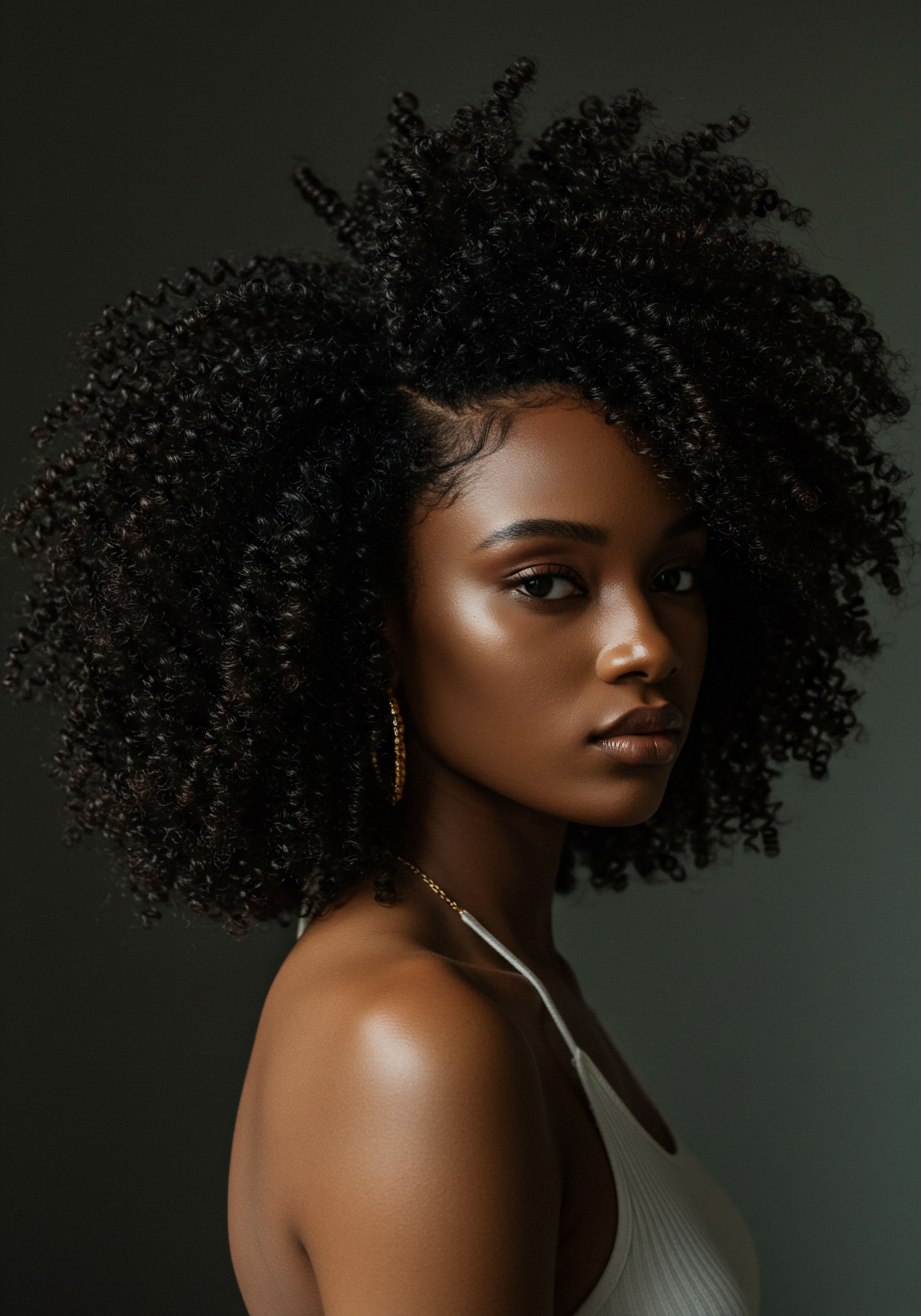
What Makes Textured Hair Fibers More Vulnerable?
The very characteristics that give textured hair its distinct beauty also contribute to its susceptibility to mechanical damage.
- Elliptical Cross-Section ❉ Unlike the round cross-section of straight hair, textured hair fibers often have an elliptical or even flat shape. This shape, combined with the natural bends, means the hair does not lie as smoothly against surfaces, increasing points of friction.
- Uneven Cuticle Lay ❉ The coiled nature causes the cuticle scales to lift more readily at the curves and bends of the strand. This creates a less uniform, more exposed surface compared to straight hair, where cuticles can lie flat along the entire length.
- Fewer Cuticle Layers ❉ Some research indicates that textured hair may have fewer cuticle layers than other hair types, making its protective barrier thinner and more easily compromised by external forces.
- Natural Dryness ❉ The coiling pattern makes it challenging for natural scalp oils to travel down the entire length of the hair shaft, leading to increased dryness. Dry hair is less pliable and more prone to breakage when subjected to friction.
The collective impact of these intrinsic qualities means that textured hair requires a more considered approach to protection, especially during periods of prolonged contact like sleep. Understanding these foundational aspects helps us appreciate why seemingly innocuous nighttime habits can have a profound cumulative effect on hair health.

Ritual
As daylight fades and the world settles into its nightly rhythm, our bodies seek restoration. For our hair, however, this period of rest can inadvertently become a silent battleground. We drift off, perhaps without a second thought to the delicate strands gracing our pillows, yet beneath the surface of our peaceful slumber, a subtle yet persistent force is at play. The friction of sleep, an often-overlooked antagonist, can systematically chip away at the vitality of textured hair.
This realization shifts our focus from merely acknowledging vulnerability to discerning the specific practices and habits that either mitigate or exacerbate this nightly wear. It calls us to consider the conscious choices we make before closing our eyes, transforming our bedtime routine into a thoughtful ritual of protection.
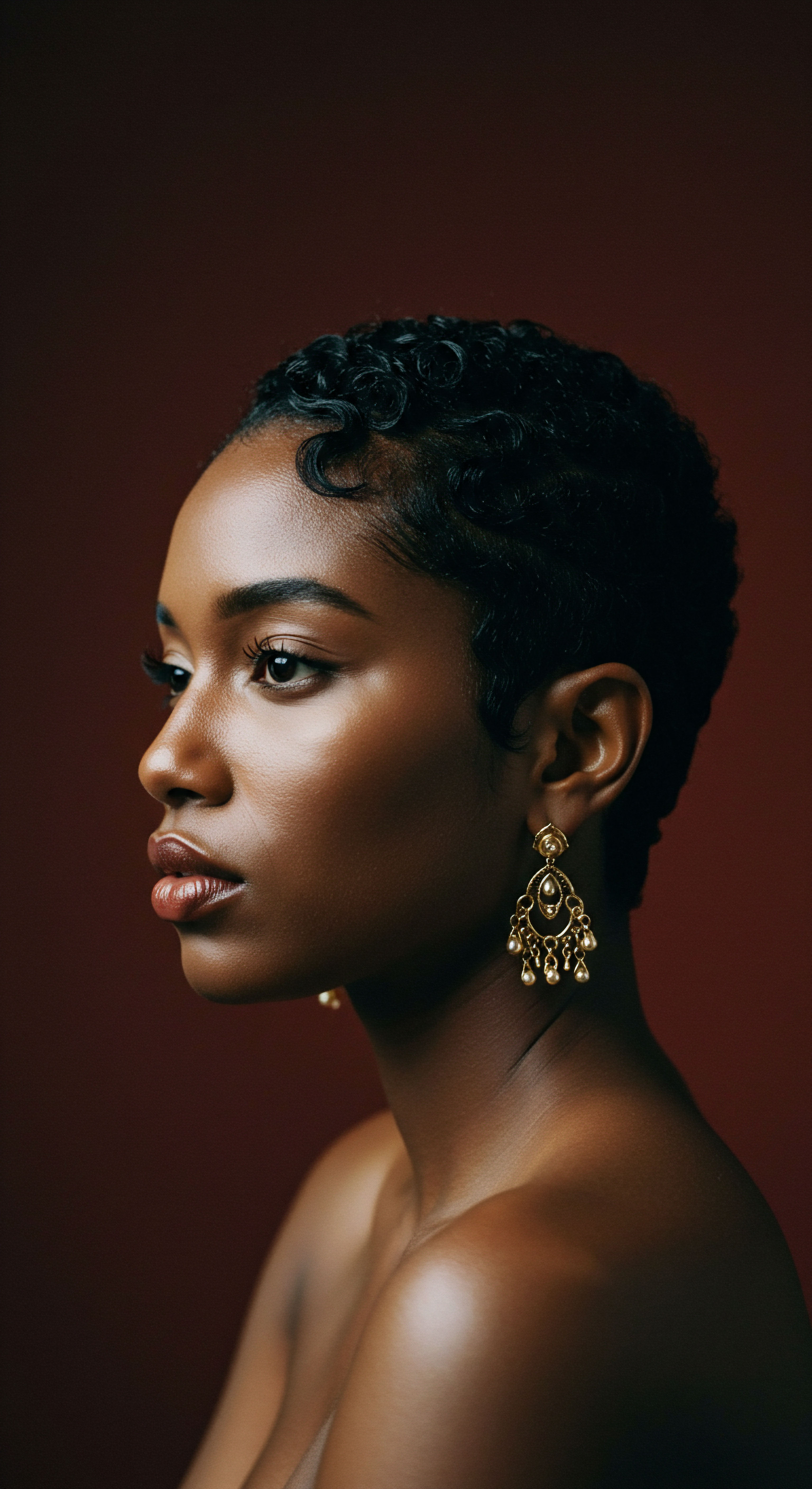
The Mechanics of Nighttime Friction
The average person shifts positions multiple times throughout the night. Each turn, each adjustment, causes hair to rub against the pillowcase or bedding. This constant, repetitive rubbing generates friction. On a microscopic level, this friction acts like sandpaper against the hair’s outer cuticle.
While silk or satin pillowcases offer a smoother surface than cotton, significantly reducing the coefficient of friction, some degree of interaction remains. Cotton, with its absorbent and coarser fibers, is particularly problematic. It not only creates more resistance but also draws moisture away from the hair, leaving it parched and brittle, thus more susceptible to mechanical damage.
Consider the impact of this continuous movement:
- Surface Abrasion ❉ The friction directly abrades the cuticle, lifting and eroding the protective scales. This leads to a rougher hair surface, which then tangles more easily, creating a vicious cycle of damage.
- Tension and Pulling ❉ As we move, hair can get caught or pulled, especially if it’s not secured. This tension on the hair shaft can lead to breakage along the length of the strand or even stress the hair follicle, potentially impacting growth over time.
- Static Charge Accumulation ❉ Rubbing against certain fabrics, particularly synthetic ones, can generate static electricity. This causes strands to repel each other, leading to frizz and further tangling, making hair harder to manage in the morning.

How Does Repeated Rubbing Impact Hair Integrity?
The cumulative effect of sleep friction is often not immediately apparent, but it manifests over time as diminished hair health. Hair that consistently experiences high friction during sleep often presents with several tell-tale signs:
- Increased Breakage ❉ This is perhaps the most direct consequence. The constant mechanical stress weakens the hair shaft, leading to strands breaking off at various points along their length. This can result in shorter pieces of hair, a general reduction in length retention, and a less dense appearance.
- Split Ends ❉ When the cuticle is compromised, the inner cortex becomes exposed and vulnerable. The ends of the hair, being the oldest and most exposed parts, are particularly prone to splitting as the structural integrity of the fiber deteriorates.
- Dullness and Lack of Shine ❉ A smooth, intact cuticle reflects light, giving hair its natural luster. When cuticle scales are lifted or damaged by friction, the surface becomes uneven, scattering light rather than reflecting it. This results in hair that appears dull, lifeless, and lacking vibrancy.
- Excessive Tangling and Matting ❉ Damaged, lifted cuticles snag on neighboring strands, leading to increased tangling and matting, especially for highly textured hair. This makes detangling in the morning a challenge, often causing more breakage and frustration.
Nightly sleep friction, though often unseen, systematically compromises hair’s outer cuticle, leading to breakage, dullness, and increased tangling over time.

Crafting a Nighttime Sanctuary
Recognizing the impact of sleep friction empowers us to transform our nighttime habits into protective rituals. The goal is to minimize direct contact between hair and abrasive surfaces, preserving moisture and the integrity of the hair shaft.
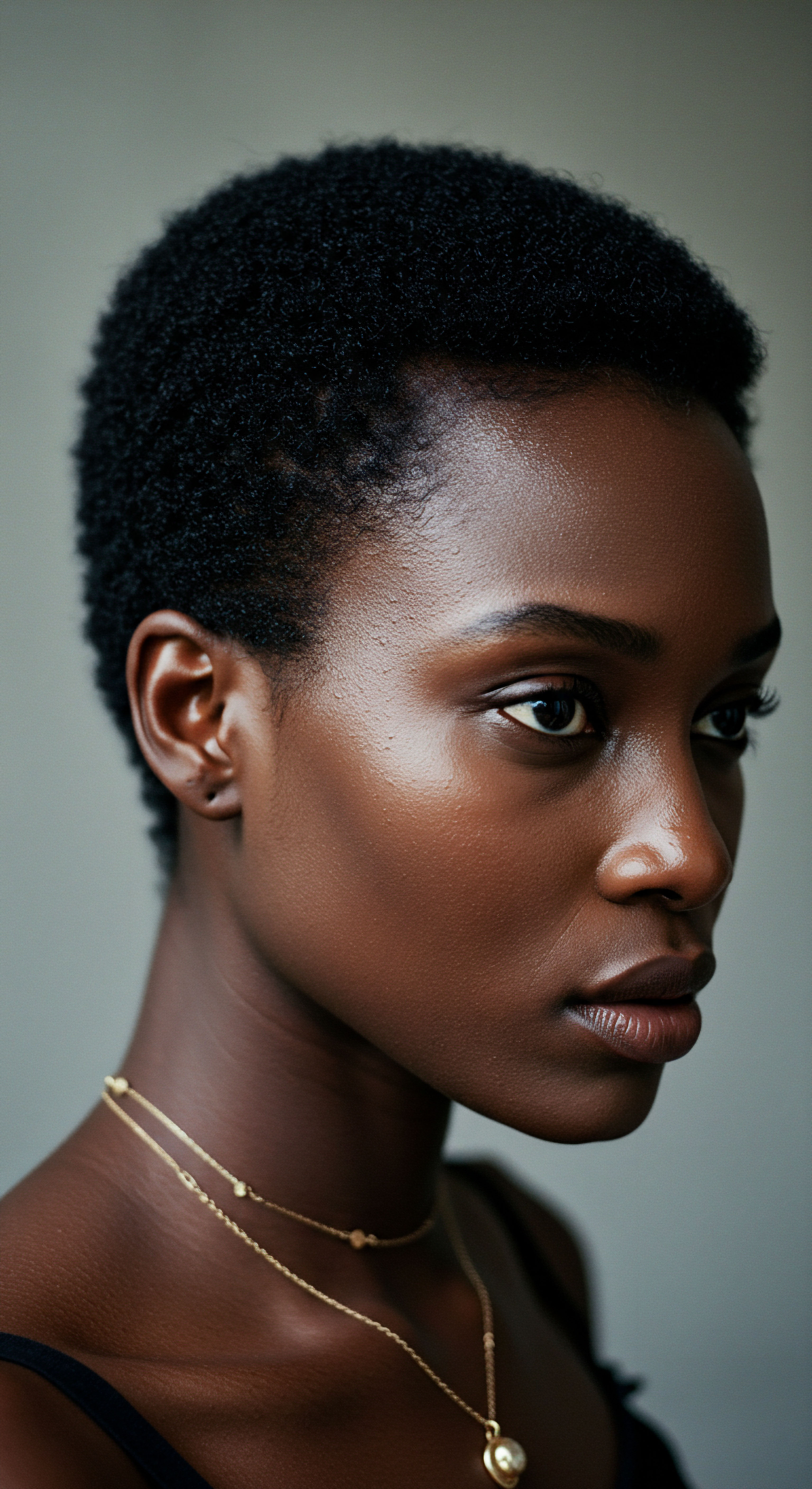
What Simple Steps Can Protect Textured Hair Overnight?
The shift towards protecting hair during sleep does not demand complex routines; rather, it calls for mindful adjustments that honor the delicate nature of textured strands.
A primary defense against the rigors of sleep friction involves the choice of bedding. Silk Pillowcases or Satin Pillowcases stand as gentle guardians, their smooth surfaces allowing hair to glide rather than snag. Unlike cotton, which can absorb precious moisture and create resistance, silk and satin help retain hair’s natural hydration, reducing dryness and the likelihood of breakage. This seemingly small alteration in sleep environment yields significant benefits for hair’s overall resilience.
Beyond the pillow, securing the hair itself provides an additional layer of defense. Loose hair, especially long or highly textured hair, is more susceptible to tangling and mechanical stress. Gentle protective styles, such as a loose pineapple, braids, or twists, keep the hair contained, minimizing its movement against the pillow. These styles also help preserve the natural curl pattern, reducing the need for extensive manipulation in the morning.
The use of a Bonnet or Head Scarf, preferably made of silk or satin, offers the most comprehensive protection. This accessory encapsulates the hair, completely shielding it from friction with bedding. It also helps to maintain a consistent moisture level within the hair, creating a micro-environment that supports hydration and minimizes dryness. For many with textured hair, the bonnet is not merely an accessory but a fundamental tool in the nightly care regimen, a testament to its efficacy in preserving hair health.
| Material Cotton |
| Friction Level High |
| Moisture Absorption High |
| Hair Damage Potential Significant (breakage, frizz, dryness) |
| Material Satin |
| Friction Level Low |
| Moisture Absorption Low |
| Hair Damage Potential Minimal (preserves hydration, reduces tangles) |
| Material Silk |
| Friction Level Very Low |
| Moisture Absorption Very Low |
| Hair Damage Potential Negligible (optimal for delicate strands) |
| Material Selecting the right sleep surface can dramatically alter the nightly experience for textured hair. |
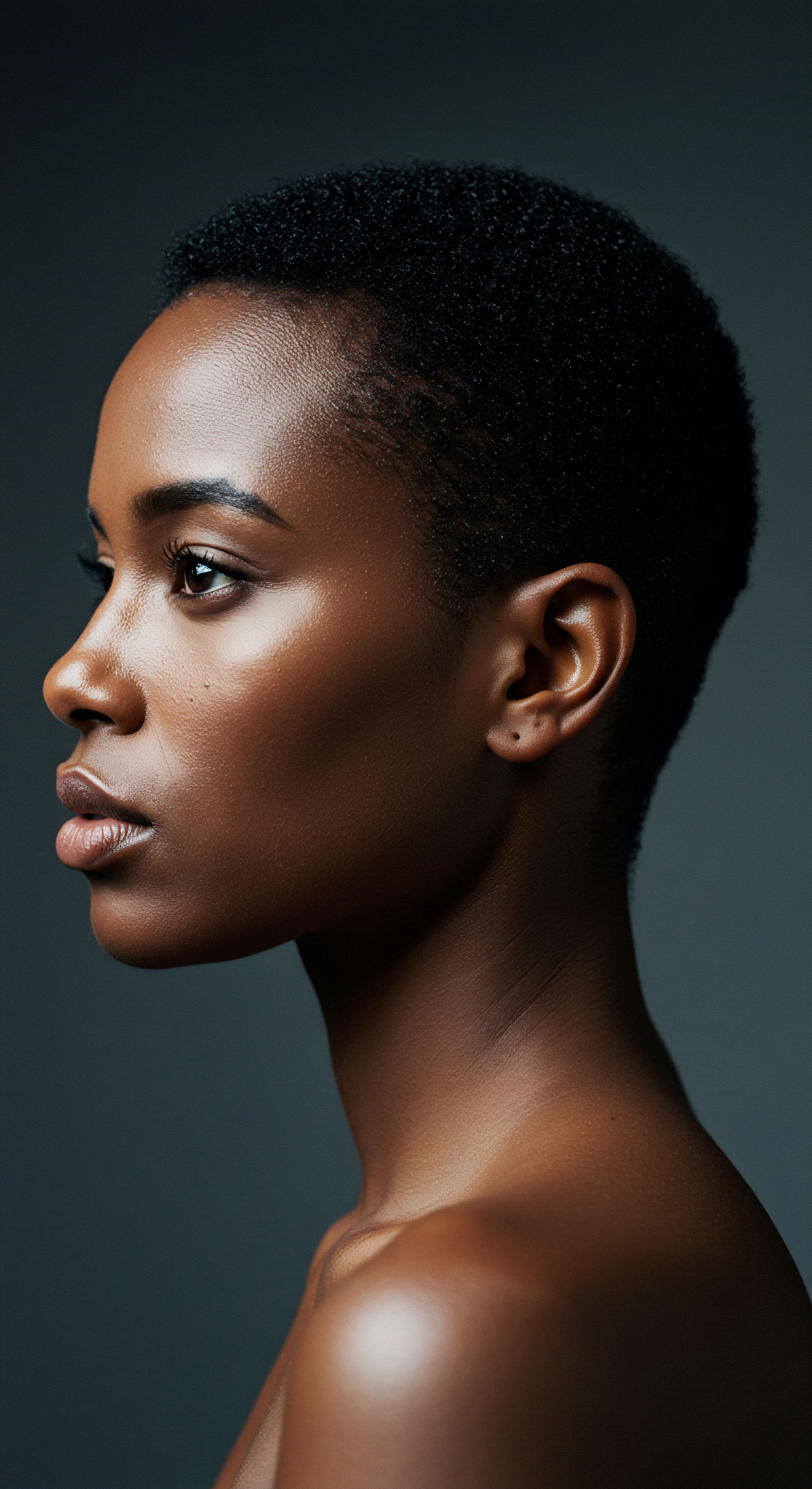
Relay
The story of sleep friction and textured hair extends beyond the visible signs of damage, delving into the very science of fiber mechanics and the profound influence of cultural practices. It is a dialogue between the microscopic world of the hair shaft and the macroscopic routines of daily life, underscored by data that reveals the silent toll taken by seemingly innocuous habits. To truly grasp the depth of this interaction, we must move past surface-level observations and into the intricate interplay of forces that shape our hair’s resilience. This perspective offers a deeper appreciation for the adaptive strategies adopted across generations, recognizing that wisdom often emerges from lived experience and scientific inquiry alike.

The Biomechanics of Fiber Fatigue
Hair, like any other fiber, is subject to mechanical fatigue when exposed to repeated stress. During sleep, the constant rubbing and compression against bedding materials impose cyclical forces on individual hair strands. These forces, while seemingly minor in isolation, accumulate over hours of tossing and turning. The cuticle, being the outermost layer, bears the brunt of this interaction.
Studies have shown that the friction coefficient of hair is not uniform; it varies depending on the direction of rubbing relative to the cuticle scales. When hair slides against a surface in the “against cuticle” direction (from tip to root), friction is significantly higher than in the “with cuticle” direction (from root to tip). This directional anisotropy means that even gentle movements can cause considerable abrasion as hair fibers shift in various orientations against the pillow.
The susceptibility of textured hair to this mechanical fatigue is underscored by its inherent structure. Research by Bhushan, Trinh, and Chen (2014) highlights that the friction coefficient actually increases with the degree of curliness. Specifically, their work found that the friction coefficients in the inward direction toward the hair root were approximately 0.47 for straight hair, 0.51 for curly hair, and 0.54 for wavy hair. This empirical data demonstrates that the more tightly coiled a hair strand, the greater the resistance it encounters when sliding against a surface.
This heightened friction translates directly to increased wear and tear on the cuticle, accelerating damage and reducing the hair’s overall strength. The unique morphology of textured hair, with its elliptical cross-section and points of natural curvature, inherently presents more surface area for frictional engagement, compounding the issue.
Research indicates that hair’s friction coefficient increases with curliness, making textured strands inherently more vulnerable to mechanical wear from sleep.

Beyond the Physical ❉ Hair’s Cultural Resonance
The impact of sleep friction on textured hair extends beyond purely physical damage; it touches upon deeply ingrained cultural narratives and personal identity. For many, particularly within Black and mixed-race communities, hair is not merely an accessory; it is a profound symbol of heritage, self-expression, and resilience. The health and appearance of textured hair can influence self-perception and confidence.
When sleep friction leads to chronic dryness, breakage, or diminished curl definition, it can become a source of frustration and even emotional distress. The effort and resources invested in nurturing textured hair are significant, and the undermining of these efforts by an unseen nightly force can be disheartening.
Historically, communities with textured hair have developed sophisticated nighttime rituals and protective styling techniques, often passed down through generations. These practices, such as braiding, twisting, or wrapping hair with silk scarves, were not always explicitly understood through the lens of modern tribology, yet their efficacy in mitigating sleep friction was keenly observed. This ancestral wisdom, born of necessity and a deep connection to hair, offers valuable insights that align remarkably with contemporary scientific understanding of hair care. The modern adoption of satin bonnets and silk pillowcases is, in many ways, a continuation of these protective legacies, adapting traditional practices to modern materials while honoring the enduring need for hair preservation.

Environmental Factors and Sleep’s Broader Influence
The environment in which we sleep also plays a substantial role in the extent of friction damage. Humidity levels, for instance, influence hair’s mechanical properties. In drier environments, hair becomes more brittle and less pliable, making it more prone to breakage under frictional stress.
Conversely, excessively humid conditions can cause hair to swell, lifting cuticle scales and making them more vulnerable to abrasion. Maintaining a balanced humidity level in the sleep environment can support hair health.
Beyond direct friction, the quality of sleep itself indirectly affects hair health. While the primary focus here is mechanical damage, it is worth noting that inadequate sleep can lead to elevated stress hormones like cortisol. Chronic high cortisol levels have been linked to disruptions in the hair growth cycle, potentially leading to increased shedding. Therefore, a holistic approach to sleep and hair health acknowledges both the direct physical impact of friction and the indirect physiological effects of sleep quality on the hair follicle and overall strand integrity.
Understanding the multifaceted nature of sleep friction’s impact requires a synthesis of scientific inquiry and lived experience. The deliberate choices we make regarding our sleep environment and hair preparation are not merely aesthetic preferences; they are informed decisions rooted in the biomechanical realities of textured hair and the enduring wisdom of its care.
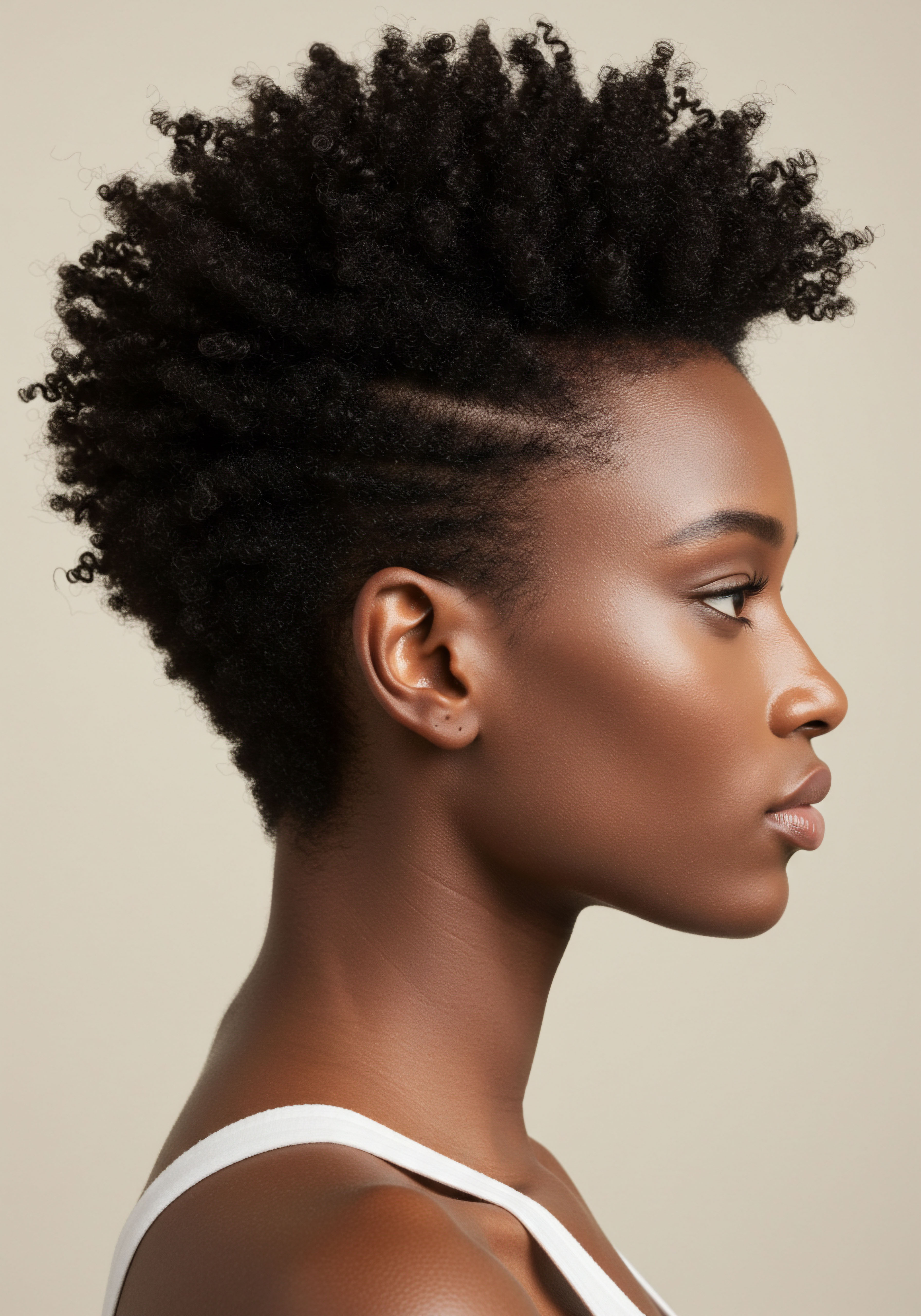
Reflection
The quiet hours of slumber, often seen as a period of absolute repose, reveal themselves as a dynamic stage for our textured hair. What begins as a simple act of rest can, without mindful consideration, become a source of subtle yet persistent challenge. We have journeyed through the microscopic world of the hair fiber, observed the mechanical dance of friction, and acknowledged the deep cultural ties that bind us to our strands. The damage from sleep friction is not a dramatic, sudden event, but a gradual accumulation, a quiet erosion of vitality.
Yet, in this understanding, there is profound possibility. By honoring the inherent qualities of textured hair and integrating gentle, protective rituals into our nightly rhythms, we do more than just preserve strands; we uphold a legacy of care, celebrate individual beauty, and ensure that our hair can truly rest, regenerating its strength and splendor for the day ahead. The wisdom lies not in fighting an invisible enemy, but in cultivating a conscious relationship with our hair, even in our dreams.

References
- Bhushan, B. (2010). Nanoscale characterization of human hair and hair conditioners. Progress in Materials Science, 55 (1), 1-52.
- Bhushan, B. Trinh, L. & Chen, N. (2014). Friction Dynamics of Straight, Curly, and Wavy Hair. Colloids and Surfaces B ❉ Biointerfaces, 123, 401–413.
- El-Messiry, M. Shaker, M. & Gouda, M. (2017). Electric Static Charge Generated from the Sliding of Head Scarf Textiles against Skin and Hair. EKB Journal Management System .
- Feughelman, M. (1997). Mechanical Properties of Keratin Fibers. Springer-Verlag.
- Paula, J. (2001). Hair Cosmetics ❉ An Introduction. CRC Press.
- Ribeiro, A. Martins, M. Tinoco, A. & Cavaco-Paulo, A. (2021). Hair resistance to mechanical wear. .
- Robbins, C.R. (2002). Chemical and Physical Behavior of Human Hair, 4th ed. Springer-Verlag, New York.
- Schwartz, A. M. & Knowles, D. C. (1963). Frictional Effects in Human Hair. Journal of the Society of Cosmetic Chemists, 14 (2), 67–73.
- Wilkinson, J.B. & Moore, R.J. (1990). Cosmetics Science and Technology. Blackwell Scientific Publications.
- Wolfram, L.J.; Dika, E.; Maibach, H. (2007). Hair anthropology. in Ethnic Skin and Hair (Berardesca, E.; Leveque, J.L.; Maibach, H.I. eds.), Informa Healthcare, UK.